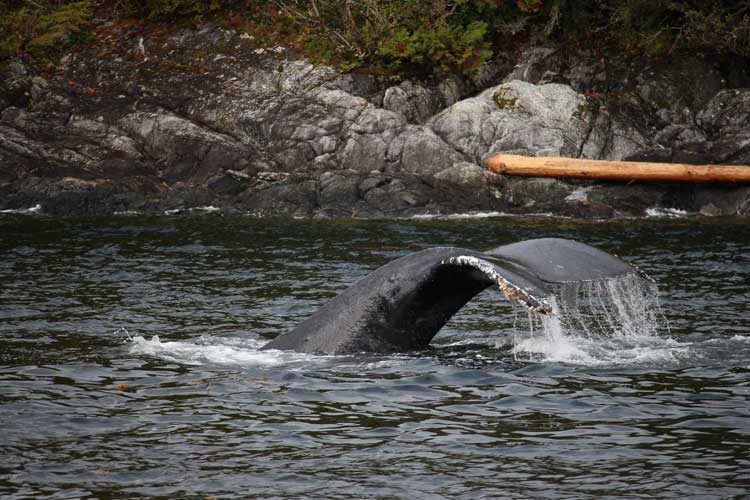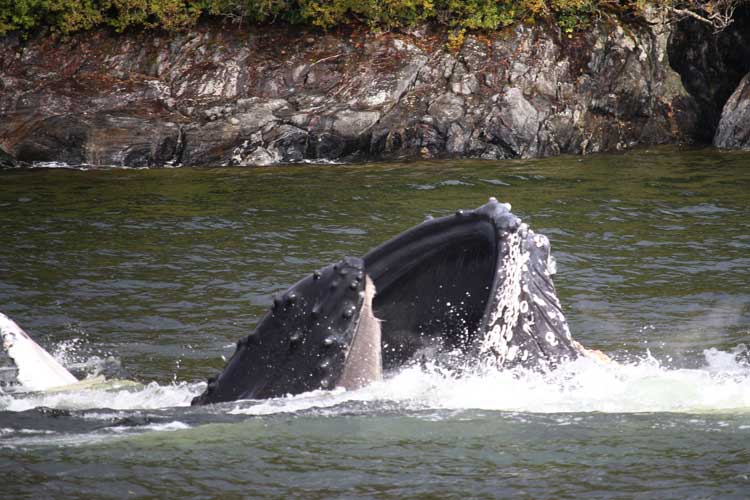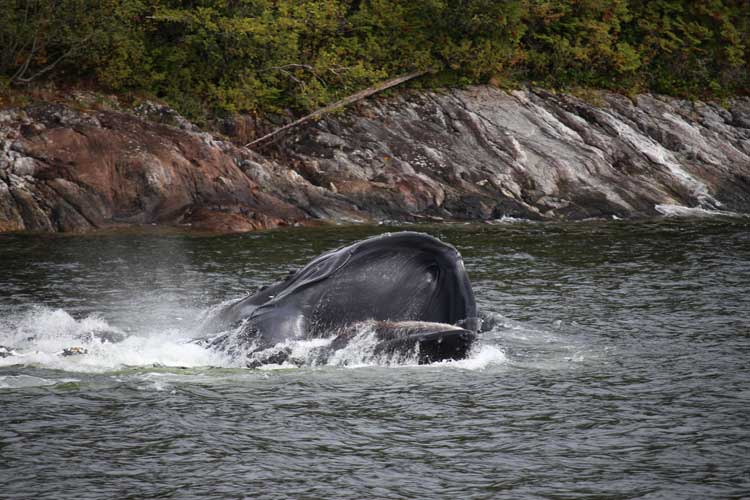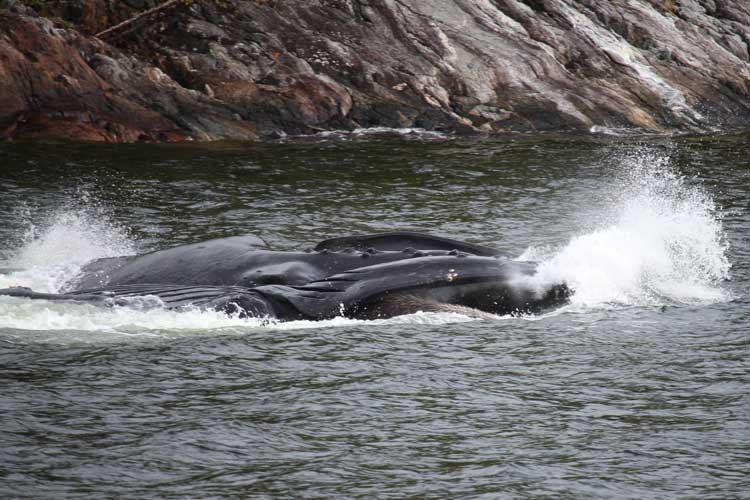Field Journal: Whale Watching in Canada
Posted by Kevin Clement
in Americas and Expeditions
The waterway we were cruising up among the jumble of islands north of Vancouver Island was marked on the chart as “Whale Channel”. I guess that should’ve been a clue for some excellent BC whale watching. All day from the deck of our chartered sailboat we had been seeing marine mammals, most of them humpback whales, cruising, feeding, and, in three cases, sleeping at the surface.
Then, as our captain steered us out of Hartley Bay, he caught a flash of white, out on the other side of the channel, miles away. To be visible from that distance, it must’ve been a big flash of white. We watched for a while, but it wasn’t repeated. “Should we go investigate? It’ll mean we won’t be at the hot springs until after dark.” he asked me.
“You bet,” I said. It could be nothing…but then, it could be something very interesting.
As we reached the other side 15 minutes later, we saw a humpback spout, then another. Two whales swimming together. They blew four more times each; then, one after the other, showed their flukes to the sky as they dove. They didn’t seem to be traveling, and something about the way their movements were synchronized suggested that they might be cooperatively feeding.
“We’ll wait to see them come up,” I said to the group. “Should be about five minutes.”
Five minutes later, there was an explosion about 50 meters away. Everyone on board jumped. The two whales had burst simultaneously to the surface from deep below, as if trying to leave the sea forever. They rose with their huge mouths agape, both pleated throats distended with a swimming pool’s-worth of seawater teeming with tiny fish.
Then they sank beneath the surface, expelling the water, trapping the fish, probably herring, behind the sieve of their baleen plates. In a few moments, they were back at the surface blowing. They took six breaths this time before flashing their flukes and diving.
“Watch for the bubbles,” I told the group. Several of them looked at me quizzically. But then somebody saw them: a line of bubbles rising up from below, lengthening as we watched, forming an arc, like someone drawing a circle on the surface of the ocean. Even before it was complete, small fish were jumping frantically inside it, trapped. They knew what was coming…and so did I.
Another fountain of white foam and gray whale hide surged upward within the circle. Cavernous mouths closed around water and fish and the animals sank back into the maelstrom they had created.
You can watch whales for years and never see bubble-net feeding, where they blow a curtain of bubbles to confuse and concentrate their prey, then swim up through the corral to scoop up a whole school of fish at a gulp. Only humpbacks do it, and only in a few places. According to some ethologists, it is a behavior as complex and skillful as any practiced by primates, including the use of tools.
We enjoyed the whale watching for another 40 minutes. Oh, and the hot springs were wonderful after dark.
Learn more about this expedition on our Canada Spirit Bears Tour page.







